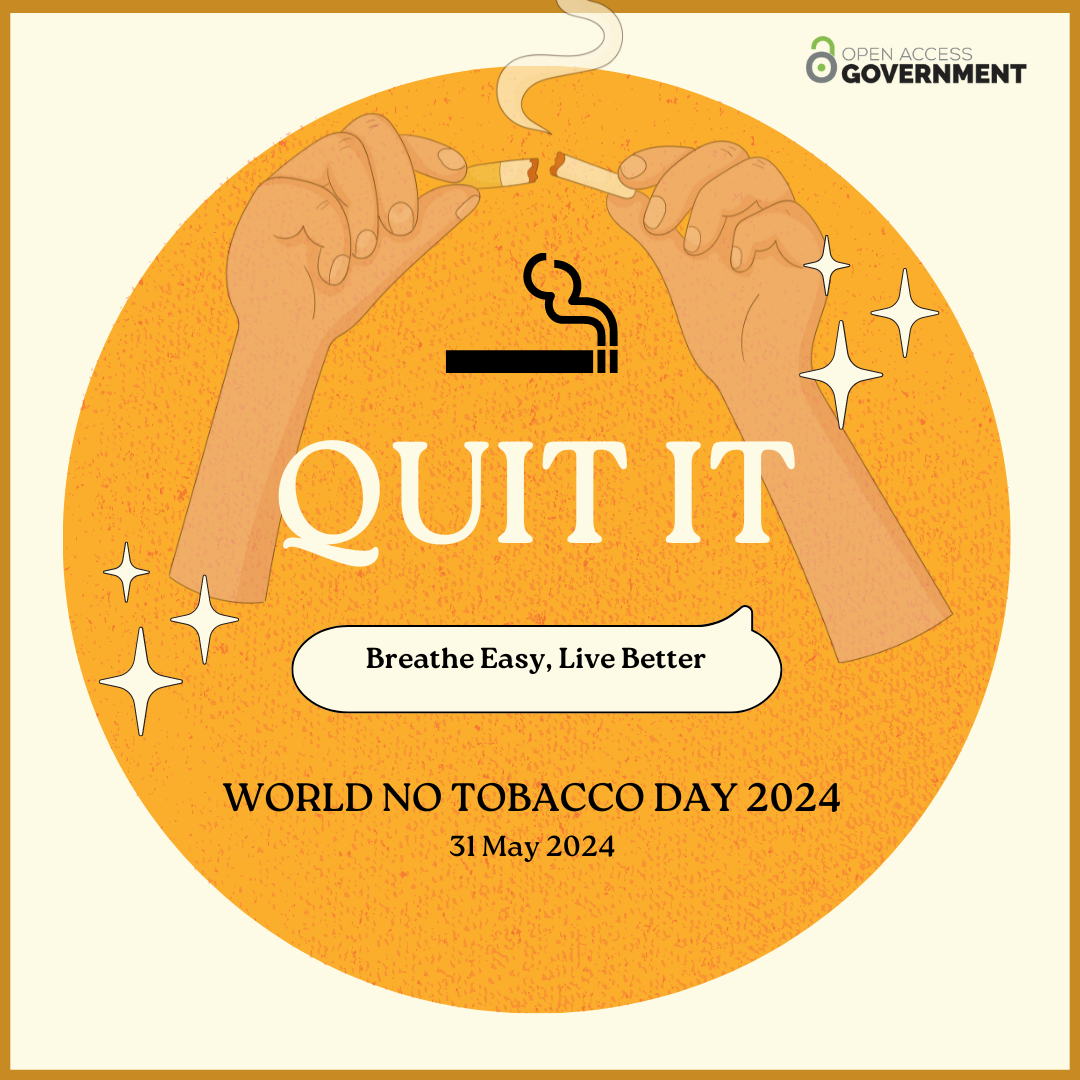For World No Tobacco Day 2024, we explore the addictive nature of tobacco for young people and how to help convince young people to keep off tobacco and quit smoking
Tobacco and nicotine addictions often begins at a young age: nine out of ten smokers start before the age of 18, and getting hooked is easy. Over two-thirds of those trying one cigarette go on to become daily smokers.
And quitting is hard. On average, it takes someone 30 attempts to stop smoking.
On average it takes someone 30 attempts to stop smoking.
World No Tobacco Day 2024
If we want to keep future generations away from tobacco, we need to see significantly sharper measures from decision-makers as well as collective advocacy efforts on both national and global levels.

What concrete measures need to be taken to reduce the use of tobacco among young people?
Of course, there is no single answer to that question, but the main solution is social responsibility and can be divided into three main areas: stricter marketing rules and scaled-up smoke-free measures, tax regulations, and intensified dissemination on the effects of the tobacco industry.
Firstly, the marketing of tobacco products needs to be far more regulated. Today we see how the tobacco industry, in a bid to get new generations hooked and turn them into lifelong customers, pours money into digital and social media advertising, pays vendors near schools to display tobacco products in their shops, and sponsors films and series on streaming platforms to feature tobacco products, often portraying smoking as glamorous and cool.
Stopping vaping and other new smoking trends
Ever-increasing numbers of vapes target young people, and candy-like flavours make a harmless impression, while bright colors and shapes give them a playful look.
To protect our new generation from addiction and health risks, we need to regulate all tobacco and nicotine products, with plain packaging, a ban on flavours, health warnings, and bans of all promotional and misleading features or elements, like display in stores.
Last but not least, smoke-free measures must be scaled up, such as smoke-free zones that protect children and young people from the socially contagious behaviour of tobacco use and exposure to secondhand smoke. Smoke-free zones also offer support for smokers who want to quit and have already proven positive effects in several countries.
Taxing tobacco
Secondly, taxing the product is the single most effective measure to reduce tobacco smoking. To make the measurement effective, the taxation needs to be equivalent between tobacco products and between neighbouring countries.
However, as important as taxes are, they need to be paired with other regulatory measures to really have an effect and create a society that promotes a healthy lifestyle for everyone, regardless of background, origin, or socioeconomic status.
“Smoking Kills”: Negative and accurate information is KEY
Thirdly, the dissemination of the negative effects of tobacco must be improved and adapted to a younger generation. “Smoking Kills” is a ubiquitous warning on cigarette packets. However, as much as this message is relevant – it is far from enough and does not serve the purpose needed.
Today, most young tobacco users believe they will stop after a few years, but, in fact, many will become lifelong consumers. If health warnings fall on deaf ears, we need to find new ways of reaching out to them in a relevant way.
One way of doing this is by exposing the fact that the tobacco industry’s tactics to create a new generation of nicotine addicts are ruthless and manipulative. The misuse and abuse of science, its opposition to anti-tobacco laws, its attempts to influence public health debates, and its aggressive marketing of harmful products, seriously undermine public health efforts.
Exposing the environmental impacts of smoking and tobacco
Another way is highlighting the tobacco industry’s negative effects on the environment – an area that we know has a high engagement among youths. Cigarette butts are the most frequently littered item worldwide. Billions end up in rivers, seas, and oceans, where they contaminate the water and are toxic to sea life. Tobacco production itself is also polluting. Its cultivation alone is responsible for 5 percent of global deforestation. The environmental damage that the tobacco industry causes is very much in the shadows and needs to be highlighted to a much larger extent.
The WHO Framework Convention on Tobacco Control clearly states that all nicotine use should be decreased. Yet, we still see that tobacco use is responsible for an estimated 2.5 million deaths annually and that tobacco use among youths is alarmingly high. Decision-makers and social actors – we all owe it to our future generations to act now – especially to all the young people growing up in socio-economically vulnerable areas and thus run a higher risk of being affected.
We have the tools, the political instruments, and the scientific knowledge, but our actions—both globally and nationally—are missing or far too weak. This is something we simply cannot accept.
This piece was written and provided by Ulrika Årehed Kågström, President-elect of UICC and Secretary-General of the Swedish Cancer Society











